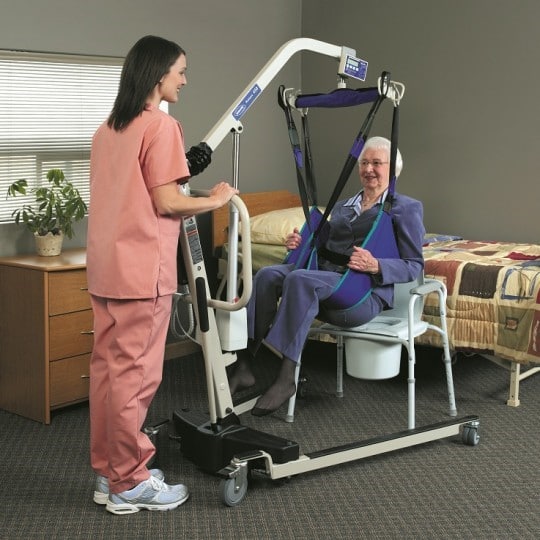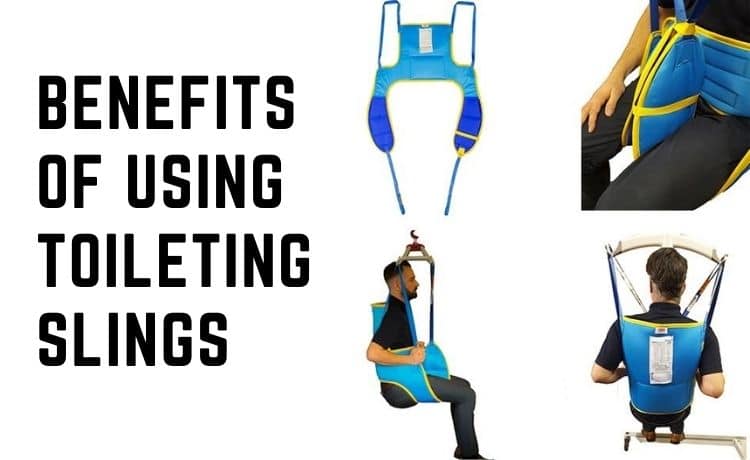People often find it difficult to lift their legs up out of the shower. This can lead to muscle strain, muscle spasms, and even worse injuries. How do you prevent this? Invest in a toileting sling for hoists! These slings are specially designed for people with mobility issues, so there is no additional effort on your part required. With these slings, you will be able to easily lift your legs without any problems. Toileting slings are a great invention that makes life safer for nurses, patients, and doctors. They are more effective for transferring or lifting patients of every size. Don’t forget to invest in these useful tools!
Toileting Slings for Hoists
Toileting slings for hoists are used to lift patients confined to bed or wheelchair while providing an easy way of transferring the patient. Toileting Slings are designed for this use and provide the necessary comfort. They are available in single, double, or triple sling configurations according to the number of hoists on the system. Toileting Slings for Hoists are designed to be used with hoist lifters to aid the user in lifting heavy objects. They consist of a seat, which is made of sewn nylon, and handles that are made of cast iron. The cast-iron handles can be used as both handles and feet, making it easier for users to lift the object.
Types of Toileting Slings
There are many different types of toileting slings. The most common type is the loop sling, which is used to place over a toilet arm and lift objects from above. A loop sling can be made by cutting a piece of wire coat hanger in half and tying the loops on each side of the piece onto a toilet arm. There are also two-piece and three-piece toileting slings that connect to the toilet with an adjustable screw. One type of toileting sling is the Toilet Lift, which enables users to remove themselves from the toilet by slowly lowering them until they are comfortably seated on the floor. These are available in two different sizes, and they also come with a strap for securing your feet to the floor. Another type of toileting sling is the Toilet Lowering Slings, which are curved with an ankle loop that requires you to use your feet to control the descent. This sling can be used in homes or businesses with no ramp access.
Benefits of Using a Toileting Slings
A toiling sling is a type of hoist that can be used for lifting and moving patients. It has five benefits, which are the reason it is used in many different clinical and non-clinical settings: it allows for patient movement, use of multiple hoists simultaneously, easy storage and transportation, safe patient handling, and less expense during transport. A toileting sling is a beneficial and cost-effective tool to assist someone who needs hoisting. There are many benefits of using one, such as:
- It can be used by an individual with arthritis or other mobility issues
- Requires less lifting and handling than a hoist
- Can be used in any environment without the need for electricity

How to use Toileting Slings for hoist
A toileting sling for hoists is designed to reduce the risk of injury and backs up the safety features on any other hoist. This type of hoist is useful for many types of people who need to be lifted or moved around. It can also help the caregiver with mobility problems by providing support for moving around. The following are some ways that toileting slings can benefit your home: A Toileting Slings for the hoist is a device that you can attach to the legs of your toilet for lifting in and out of the seat. They are used in place of using your hands to lift the toilet seat, which reduces back strain and makes it easier on your knees and hips.
Conclusion
The use of toileting slings for hoists is fantastic for lifting individuals. First, they are non-invasive which means that the person being lifted is not traumatized in any way. They also have a lot of positive benefits associated with them. The benefits of using these toilet slings are endless. They can help prevent injuries to both yourself and your patient, while also reducing the amount of time needed for an operation. Do not underestimate the importance of using this product when hoisting a patient.



